Dell XPS 15 OLED (2021) vs. Samsung Galaxy Book 2 Pro 360
Can the Dell XPS 15 OLED hold off Samsung’s new convertible?

This face-off between the Dell XPS 15 OLED (2021) and the Samsung Galaxy Book 2 Pro 360 looks to settle the fight for the supreme 15-inch laptop on the market. The Dell XPS 15 is a perennial favorite, and after surprising us with last year’s model, Samsung is back with an even better Galaxy Book 2 Pro 360.
The Dell XPS 15 OLED (2021) earned our Editor’s Choice award for its impressive 3.5K OLED display, outstanding performance, slim and premium chassis, standout speakers and a massive touchpad to go with its spacious keyboard.
For its part, the Samsung Galaxy Book 2 Pro 360 also earned our Editor’s Choice award with its stunning portable design, vivid and bright Super AMOLED display, long-lasting battery life and the included S Pen.
- Best laptops 2022
- The best laptop deals available today
- Best business laptops in 2022
While both laptops are outstanding, only one will come away with the victory, so here’s a look at how each laptop fared across seven different categories and our final decision on which 15-inch laptop is the champ.
Dell XPS 15 OLED (2021) vs Samsung Galaxy Book 2 Pro 360: Price and value
The starting price for these premium laptops is nearly identical with the Dell XPS 15 starting at $1,299 compared to $1,349 for the base model Galaxy Book 2 Pro 360. However, the Dell can top out quite a bit higher with a massive array of upgrade options available that can take you over $3,000.
Our review model of the XPS 15 OLED costs $2,401 and features an Intel Core i7-11800H, an Nvidia RTX 3050 Ti GPU, 16GB of RAM, a 512GB M.2 PCIe NVMe SSD, and a 15.6-inch, 3.5K OLED touchscreen.

The Galaxy Book 2 Pro 360 takes it a little easier on your wallet at $1,549 for an Intel Core i7-1260p, Intel Iris Xe graphics, 16GB of RAM, a 1TB M.2 PCIe NVMe SSD, and a 15.6-inch FHD Super AMOLED display.
Sign up to receive The Snapshot, a free special dispatch from Laptop Mag, in your inbox.
This one is too close to call, the Dell does start lower, and while it can get pricier than the Galaxy Book 2 Pro 360, that is partly due to features like a 3.5K display option and a dedicated GPU that the Samsung doesn’t offer. If you stick to comparable configurations, the pricing is very close.
Winner: Draw
Dell XPS 15 OLED (2021) vs Samsung Galaxy Book 2 Pro 360: Specs compared
| Row 0 - Cell 0 | Dell XPS 15 OLED (2021) | Samsung Galaxy Book 2 Pro 360 |
| Price | $1,299; ($2,401 as tested) | $1,349 (starting); $1,549 (as tested) |
| CPU | Intel Core i7-11800H | Intel Core i7-1260P |
| RAM | 16GB | 16GB |
| Graphics | Nvidia GeForce RTX 3050 Ti | Intel Iris Xe |
| Storage | 512GB M.2 PCIe NVMe SSD | 1TB M.2 PCIe NVMe SSD |
| Display | 15.6-inch 3.5K OLED InfinityEdge touchscreen | 15.6-inch FHD Super OLED touchscreen |
| Ports | USB 3.2 Type-C, 2 Thunderbolt 4, SD card reader, lock slot, headset/mic jack | 2 USB 3.2 Type-C, Thunderbolt 4, microSD, headset/mic jack |
| Battery life | 6:58 (tested) | 11:59 (tested) |
| Dimensions | 13.6 x 9.1 x 0.7-inches | 14 x 9 x 0.46-inches |
| Weight | 4.3-pounds | 3.1-pounds |
Dell XPS 15 (2020) vs. ThinkPad X1 Extreme (Gen 2): Design
Both of these laptops are absolute stunners for slightly different reasons.
Our reviewer called the XPS 15 OLED the “Porsche of laptops — elegant, refined and precision-crafted.” It’s unmistakably a Dell (even without the shimmering metallic logo on the lid), and whether you opt for the carbon fiber black or crisp Arctic white finish, it will still draw looks. Once you pop open the lid, the vanishingly small bezels of the InfinityEdge display and massive touchpad keep the premium feel of the exterior.

Typically a white laptop that sticks with white keys will be a nightmare to keep clean, but Dell applied a texture and coating to the laptop that does an admirable job of keeping fingerprints and dirt away, so your pristine laptop stays looking that way. On either side of the keyboard are top-firing speakers that will have you seriously questioning whether you need computer speakers and may have you skip the wireless headphones if you aren’t looking to keep your music private.
Turning to the Galaxy Book 2 Pro 360, it’s a similar song played in a different key. Samsung’s convertible is a marvel of modern engineering (or witchcraft) for delivering a 15.6-inch laptop this slim and light. If you are a regular traveler, it would be hard to beat this laptop for its combination of a large display that virtually disappears in a laptop bag.
The hinge is also dramatically improved from last year, allowing it to hold the display steady even while typing vigorously. And that newly robust hinge gives you a vast array of options for using the laptop in different positions, particularly handy if you are in a cramped airplane space or if you want to use the included S Pen to write or draw on the display.
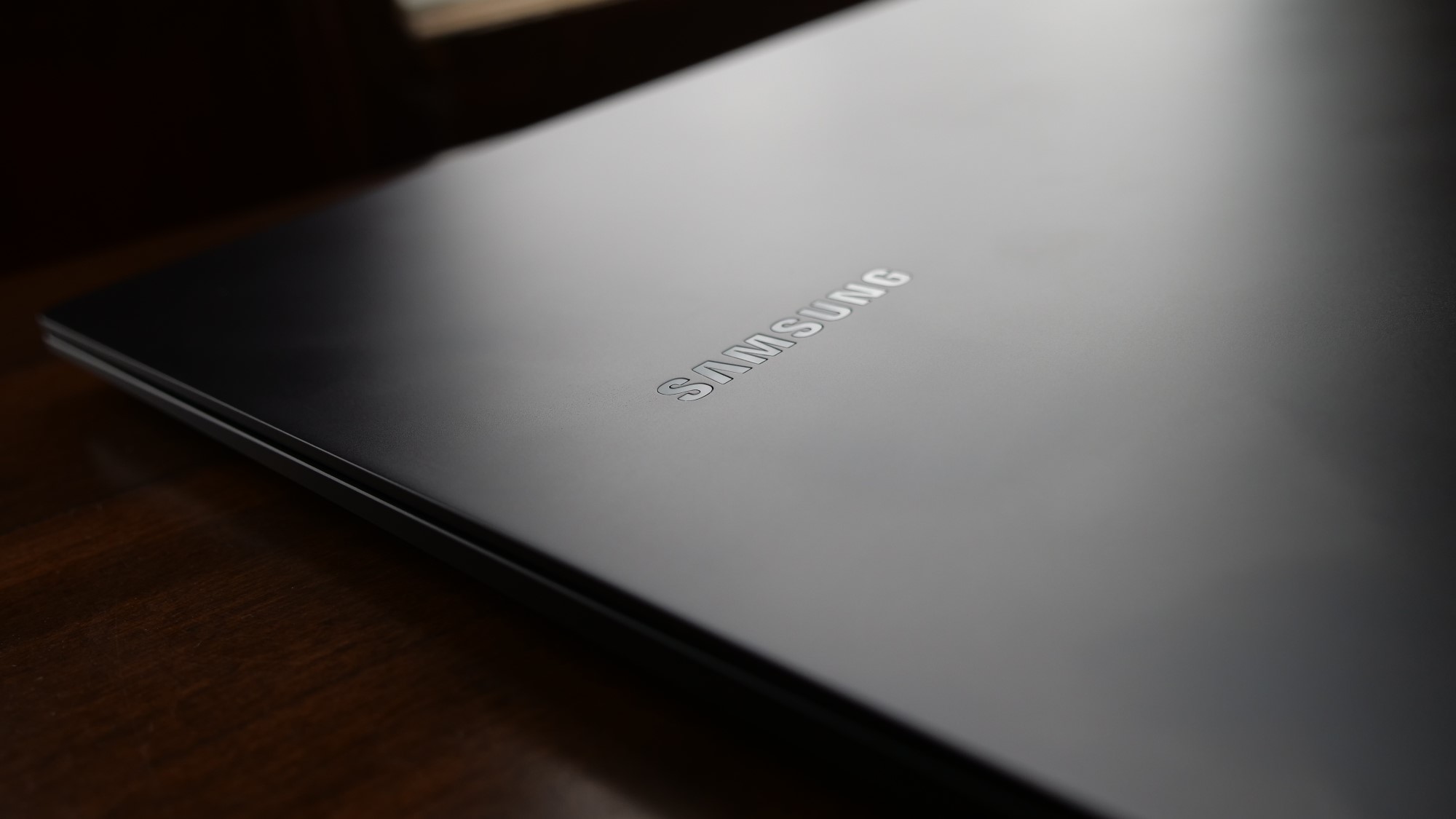
The minimal appearance of the Samsung isn’t as flashy as the Dell, but it still has an undeniably premium look to its aluminum chassis. If you want a little more flair, you can opt for the burgundy colorway that makes a definite statement.
Putting numbers to the aforementioned thin and light frame, the Galaxy Book 2 Pro 360 is 14 x 9 x 0.5 inches and 3.1 pounds, making it one of the few 15-inch laptops that can make the 13.6 x 9.1 x 0.7 inch and 4.3-pound Dell XPS 15 OLED (2021) seem large.
While both laptops look outstanding and the InfinityEdge display on the Dell gives it a slightly smaller footprint, the Galaxy Book 2 Pro 360 takes this category as it is just astounding how thin and light it is, while also delivering superior versatility thanks to its convertible form factor.
Winner: Samsung Galaxy Book 2 Pro 360

Dell XPS 15 OLED (2021) vs Samsung Galaxy Book 2 Pro 360: Ports
Depending on your needs, both of these laptops may necessitate picking up a USB-C hub or docking station to plug in all of your peripherals. However, at least they leave you with options as to which USB Type-C port you’ll plug into.
The Dell XPS 15 OLED gives you a USB 3.2 Type-C port, a pair of Thunderbolt 4 ports, a headset/mic jack, a lock port and a full-size SD card slot. Sure, a single USB Type-A slot would have been nice for legacy devices and an HDMI port if you are feeling greedy, but overall it’s a reasonable array.

Now we’ve already covered that the Galaxy Book 2 Pro 360 appears to live in some kind of extradimensional space to cram everything inside of its svelte frame, and it almost carries that off with its ports as well. It gets a single Thunderbolt 4 port, a pair of USB 3.2 Type-C ports, a headset/mic jack and a microSD card slot. While the latter is handy for storage space, it is certainly far less useful than its competitor's full-size SD card slot, unless you are an action camera or drone photographer/videographer.
For its pair of Thunderbolt 4 ports and the full-size SD card slot, the XPS 15 is the winner here.
Winner: Dell XPS 15 OLED (2021)

Dell XPS 15 OLED (2021) vs Samsung Galaxy Book 2 Pro 360: Display
Opening the lid on either of these laptops should greet you with a brief choir of angels as the vibrant colors from the OLED and AMOLED displays wash over you. The large 15.6-inch panels make them fantastic for watching or creating content and while you would be happy with either one, there is ultimately a winner.
The Dell XPS 15 OLED may not be a full 4K laptop, but the 3.5K (3456 x 2160-pixel) display is still razor-sharp, allowing you to see even the most minute details on screen. Dell’s InfinityEdge display remains a marvel, with virtually non-existent bezels on the edge of the screen to distract from the image.
The Galaxy Book 2 Pro 360 won’t give up without a fight though; Samsung’s AMOLED displays are revered in the smartphone realm, and blowing it up to 15.6-inches doesn’t detract from that beauty. The 1080p resolution isn’t as crisp as the Dell, but with the ability to flip the Pro 360 into tent, presentation, or even tablet mode, you can achieve a more standalone display feel.
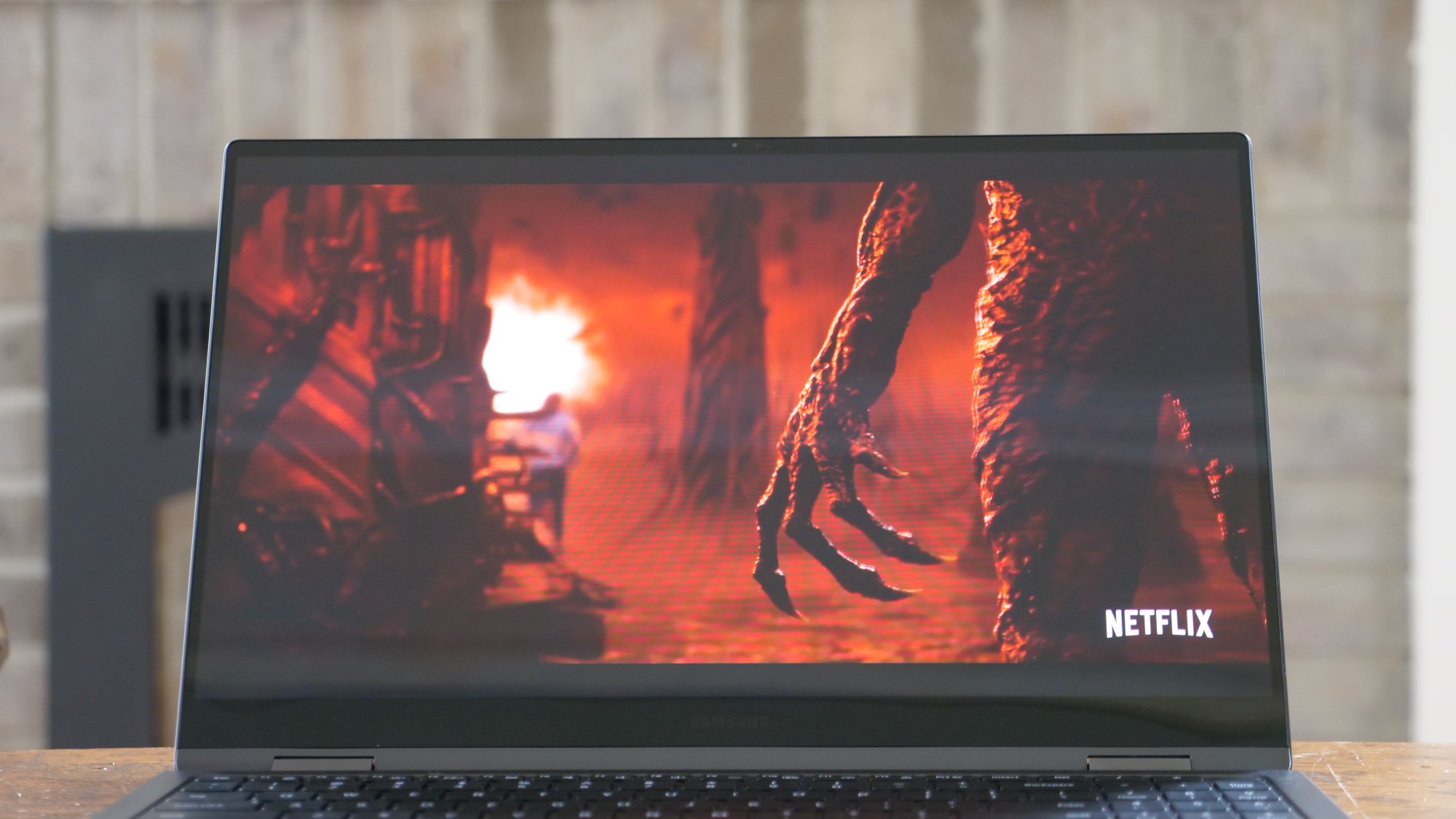
Our reviewers for both of these laptops felt that the colorimeter didn’t really do them justice, with the XPS 15 OLED hitting 85% of the DCI-P3 color gamut and the Book 2 Pro 360 managing 88%. These are both ahead of the premium average of 83%, but we were expecting something more akin to the ZenBook Pro Duo 15 (144%) or, on the smartphone side, the Galaxy S22 (151%). Regardless, you won’t be disappointed with the vibrancy, contrast or saturation on either display.
Brightness is often a criticism of OLED panels, and while both laptops escape that pitfall, they do take a backseat to some competitors. The XPS 15 OLED comes out on top with 398 nits, a fairly narrow victory over the 373 nits that the Book 2 Pro 360 produced, but both fall short of the premium laptop average of 407 nits.
Both of these models also feature excellent responsive touchscreens, although with its convertible form factor and the included S Pen, the Book 2 Pro 360 lends itself more to touchscreen usage. I consider this more of a design advantage than a display advantage, so I’m not letting it tip the scales in this category. Still, it is worth noting again for those that are interested in either writing or drawing on their laptop.
The combination of the higher resolution, superior brightness and those InfinityEdge display bezels add up to a victory for Dell.
Winner: Dell XPS 15 OLED (2021)

Dell XPS 15 OLED (2021) vs Samsung Galaxy Book 2 Pro 360: Keyboard and Touchpad
Given the relative size of these laptops, you would expect the XPS 15 to come out on top here with vastly more space to work with, but unfortunately this is where Dell falters. Our reviewer found that the keyboard had a “somewhat squishy” feel due to a lack of tactile click. The relatively shallow actuation point makes it fast to type on, but not as comfortable for lengthy typing tasks.
The Galaxy Book 2 Pro 360 by comparison has very low key travel and a shallow actuation point, because there’s nowhere for the keys to go in its tiny frame. Similar to the Dell, this results in solid typing speeds, and the island-style keys allowed our reviewer to maintain solid accuracy. However, you are going to have sore fingers at the end of a long day of typing.
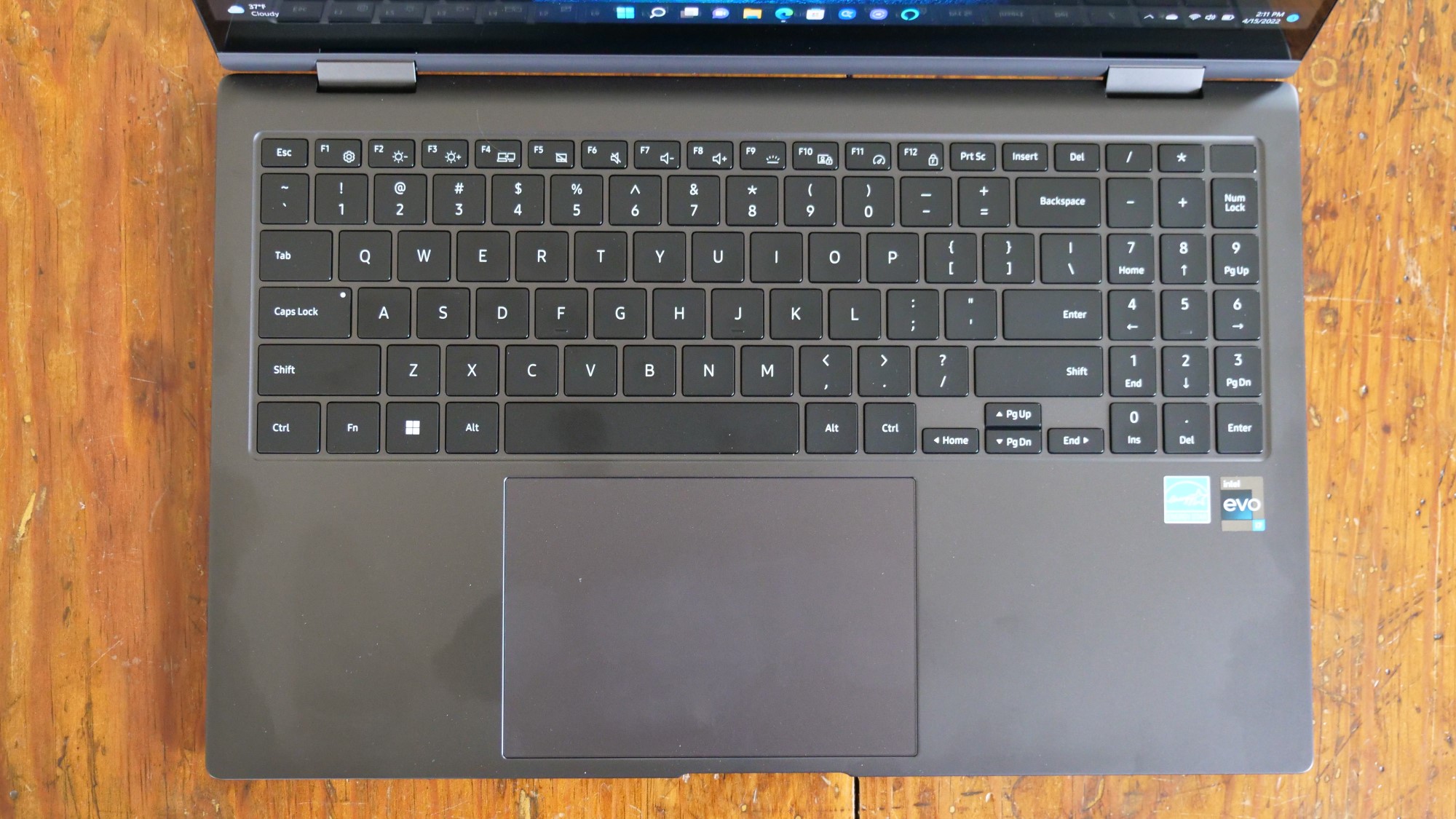
On a more positive note, the touchpads on both laptops are outstanding. Dell’s touchpad dominates its deck at 5.9 x 3.5-inches, and the Book 2 Pro 360 isn’t too far behind at 5.2 x 3.5-inches. Either touchpad is more than spacious enough for any Windows 11 gestures you attempt and were immediately responsive to three-finger swipes or pinching and zooming in our testing.
There’s no clear winner here; both stumble slightly with their keyboards and recover admirably with their touchpads.
Winner: Draw

Dell XPS 15 OLED (2021) vs Samsung Galaxy Book 2 Pro 360: Performance
This category is an interesting one as the Galaxy Book 2 Pro 360 has the advantage of using a 12th Gen IntelCore i7-1260P CPU compared to the 11th Gen Core i7-11800H processor in the Dell, but the XPS 15 gets a dedicated Nvidia RTX 3050 Ti GPU that the Intel Iris Xe graphics in the Samsung can’t hold a candle to. Either one is going to be more than equal to any gamut of productivity tasks you throw at it, but here’s a look at the benchmarks for a better idea of where each one will excel.
Unsurprisingly, the Galaxy Book 2 Pro 360 won the Geekbench 5.4 overall performance test with 9,043 to a score of 7,477 for the XPS 15. Both crush the category average of 5,267. Particularly given its lower-resolution display, this means that things will be a bit snappier on the Samsung. But again, if you are sticking to documents, web surfing, or video consumption, neither is going to show any signs of slowing down.
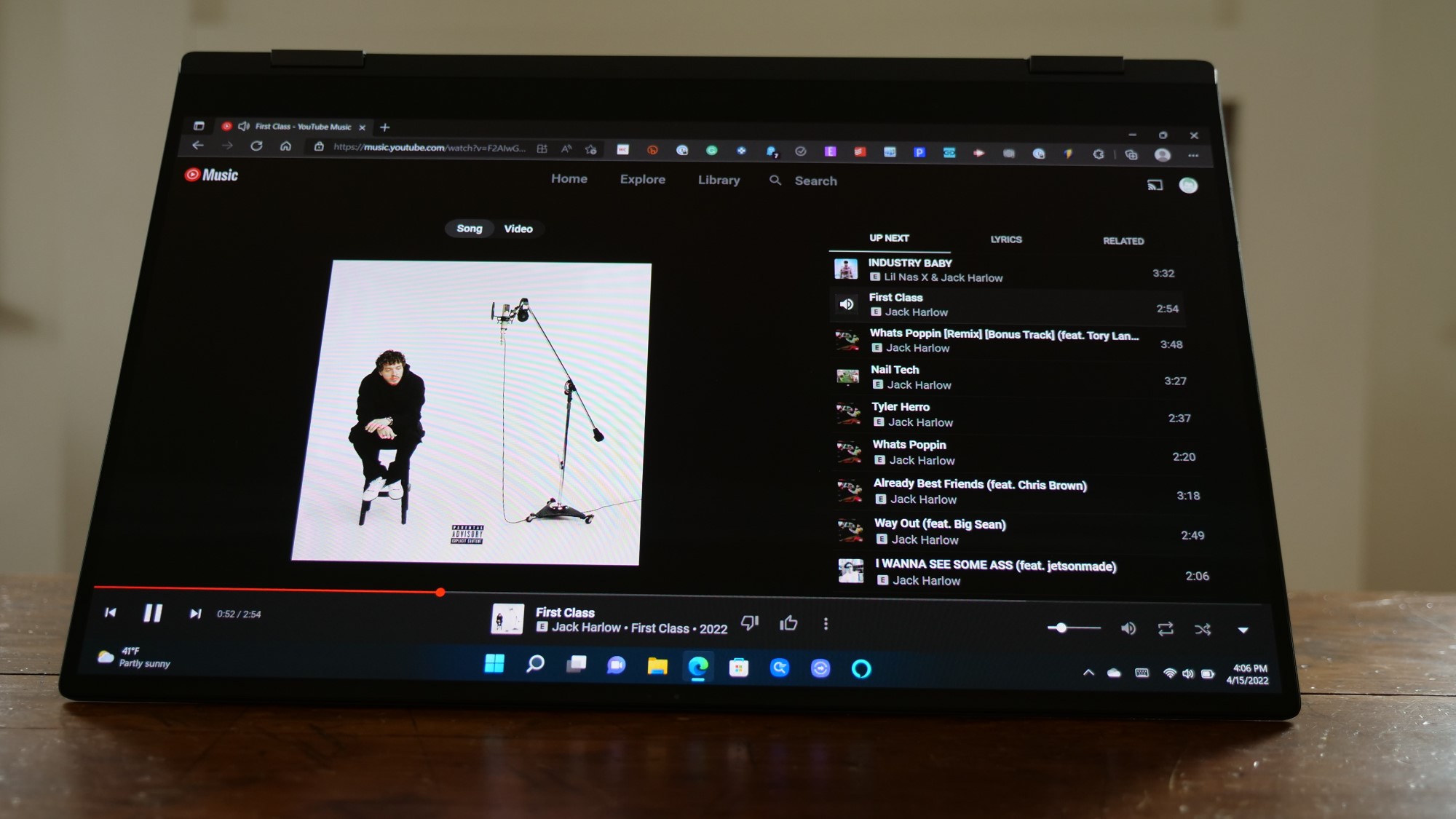
Video transcoding favors the XPS 15; it converted a 4K video to 1080p in 8 minutes and 10 seconds compared with the 9:34 result for the Book 2 Pro 360.
Storage speeds were pretty close, with Samsung hitting 762 megabytes per second on our 25GB file transfer test compared to 825.6MBps for the Dell.
Graphics performance is where the Dell steals the show with its dedicated GPU allowing it to hit 67 frames per second in Sid Meier’s Civilization VI: Gathering Storm benchmark, while the Book 2 Pro 360 could only muster 25fps. The Dell isn’t going to find its way onto our best gaming laptops, but for a casual gamer, it would be serviceable, while the Samsung just isn’t up to the task.
This is close, with each one outpacing the other in certain regards, but overall the GPU advantage makes the Dell a more versatile laptop as it could handle gaming or content creation, while the Samsung would be ill-suited to those jobs.
Winner: Dell XPS 15 OLED (2021)

Dell XPS 15 OLED (2021) vs Samsung Galaxy Book 2 Pro 360: Battery Life
The Dell’s 3.5K display stacks the deck against it here, as pushing all of those extra pixels is a nightmare for battery life. It survived for 6 hours and 58 minutes in our Laptop Mag battery test, which involves continuous web surfing at 150 nits of brightness, which is pretty respectable for a nearly 4K laptop. However, the Samsung Galaxy Book 2 Pro 360 is a lean marathoner of a laptop and cruised to 11 hours and 59 minutes in the same test.
You can opt to purchase the XPS 15 with an FHD LED display that will undoubtedly result in extra hours of battery life, but that isn’t what we are looking at today, and even with that boost, it likely wouldn’t overtake the Book 2 Pro 360.
Winner: Samsung Galaxy Book 2 Pro 360

Overall winner
While you are the overall winner if you choose either of these laptops, looking at my scorecard, the Dell XPS 15 OLED (2021) comes out on top with a narrow 3-2 victory and two draws. Ultimately, while Dell takes the overall win, the main takeaway should be that these are excellent laptops that will serve slightly different buyers well.
If you are looking to do any kind of content creation (outside of drawing) or light gaming, the Dell is the obvious choice, thanks to its dedicated GPU. This 3.5K OLED model also excels for consuming content thanks to its InfinityEdge display and those excellent built-in speakers. Photographers and videographers will appreciate that excellent display and the full-size SD card slot. The biggest trade-off for that display is the relatively weak battery life. If you travel or work away from an outlet regularly, you’ll need to factor in an external battery or consider dropping down to the 1080p model.
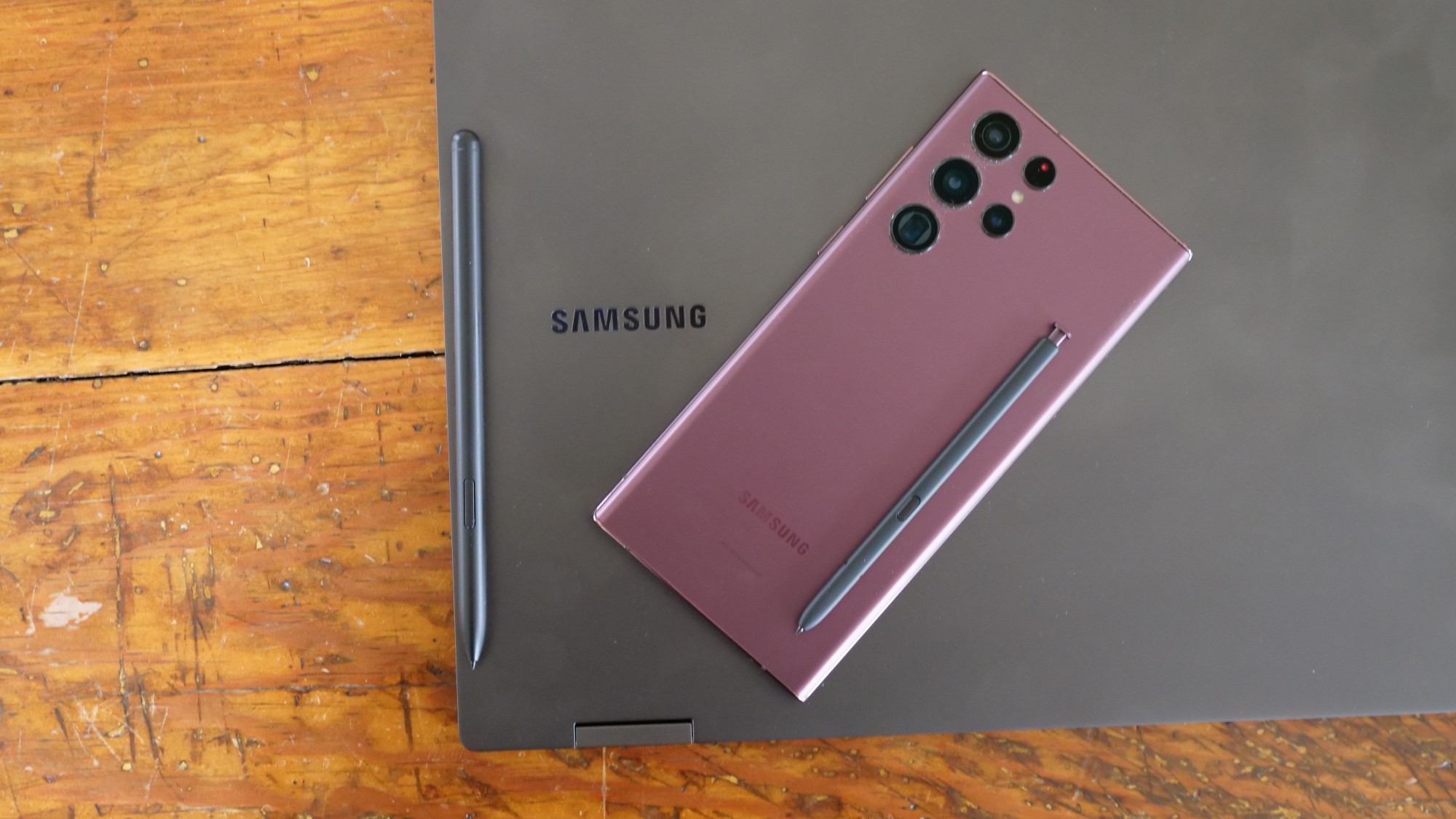
On the other hand, the Samsung Galaxy Book 2 Pro 360 is easily one of the most compelling laptops for travelers or anyone that works at coffee shops or other locations where outlets can be tough to come by. With nearly 12 hours of battery life, it would have to be a very rough day for you to kill the Book 2 Pro 360. That slim and light convertible form factor fits in just about any bag without weighing you down and will let you work in almost any environment. As long as gaming or demanding creative or engineering software isn’t crucial to your usage, the Book 2 Pro 360 is a great laptop for almost any user.
Sean Riley has been covering tech professionally for over a decade now. Most of that time was as a freelancer covering varied topics including phones, wearables, tablets, smart home devices, laptops, AR, VR, mobile payments, fintech, and more. Sean is the resident mobile expert at Laptop Mag, specializing in phones and wearables, you'll find plenty of news, reviews, how-to, and opinion pieces on these subjects from him here. But Laptop Mag has also proven a perfect fit for that broad range of interests with reviews and news on the latest laptops, VR games, and computer accessories along with coverage on everything from NFTs to cybersecurity and more.

